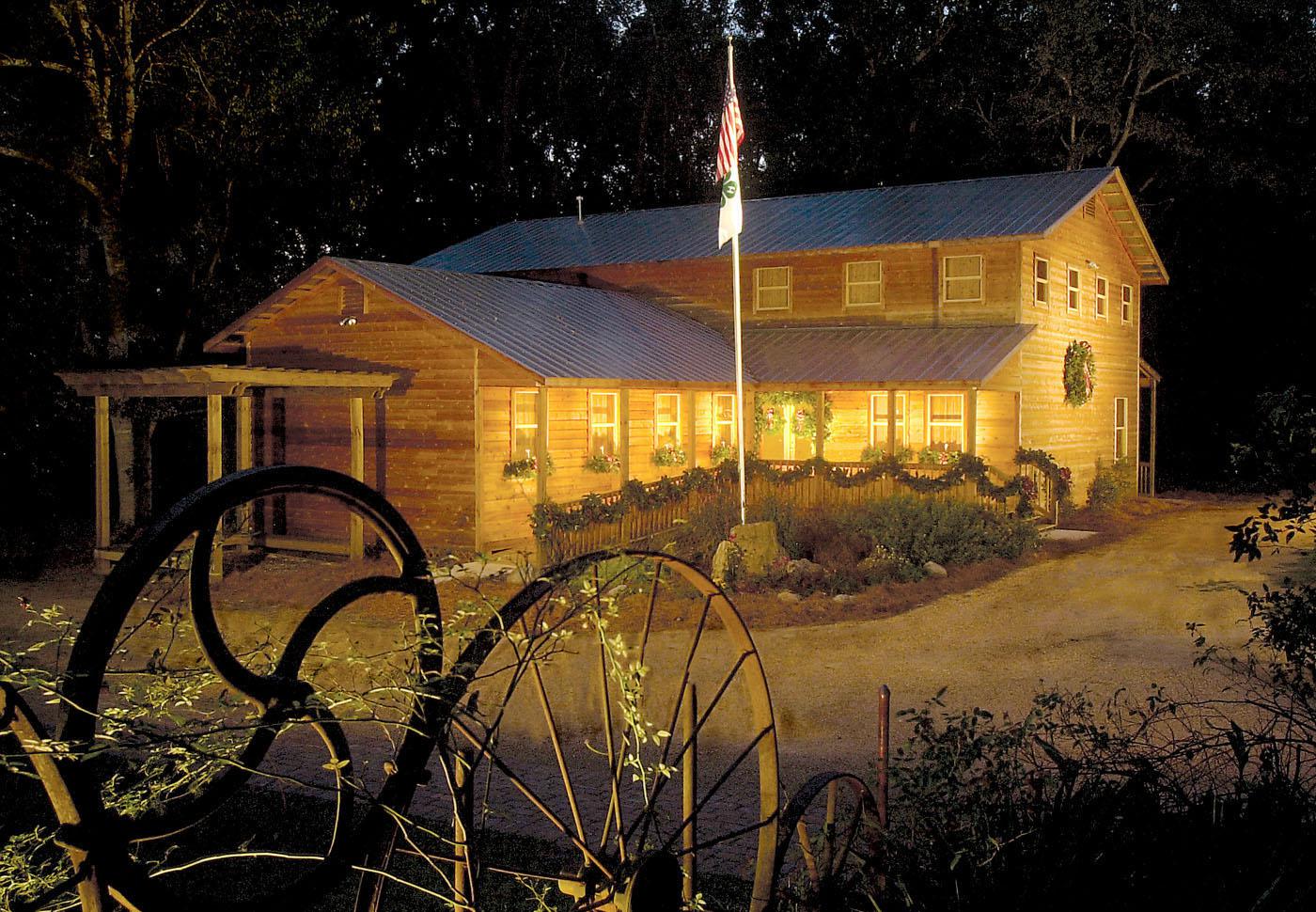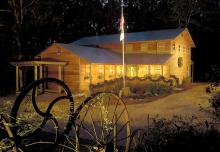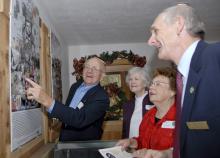Information Possibly Outdated
The information presented on this page was originally released on January 22, 2009. It may not be outdated, but please search our site for more current information. If you plan to quote or reference this information in a publication, please check with the Extension specialist or author before proceeding.
4-H learning center allows youth to experience history
By Patti Drapala
MSU Ag Communications
MISSISSIPPI STATE – Young people learn Mississippi history through textbooks, but visiting the 4-H Learning Center and Pete Frierson Museum in Jackson can give them a unique opportunity to experience the past through the eyes of their ancestors.
More than 30,000 youth have toured the learning center since it opened in December 2007 at the Mississippi Agriculture and Forestry Museum complex on Lakeland Drive. Some visitors were veteran while others were only vaguely aware of 4-H and the opportunities it affords youth.
Many youth have had their curiosity stirred, and as a result, 4-H has gained new members.
“The center is a wonderful teaching tool for us and is symbolic of the partnership between the 4-H program and the people of Mississippi,” said 4-H state program leader Susan Holder. “It demonstrates that we can be connected to our past and celebrate our heritage by learning about events that shaped Mississippi and our country.”
4-H had its beginnings in Mississippi in the 1900s. The Frierson 4-H museum at the learning center features exhibits that highlight each decade of 4-H in the state.
“Many donors worked together to fund the learning center, but it was the commitment of the late Pete Frierson that allowed us to get started,” said Morris Houston, 4-H youth development leader. “We are grateful that he showed leadership and was willing to do whatever it took to establish a facility reflective of 4-H and its involvement in educating and preparing our youth to be leaders for the future.”
The center reflects the historical theme of the agricultural complex envisioned by the Mississippi Department of Agriculture and Commerce.
“As the present becomes the past, and the future the present, the learning center will incorporate new events and learning technologies into its presentation of the historical impact of 4-H in Mississippi,” Holder said.
The center uses distance and interactive learning to reach modern youth accustomed to communication through the Internet, cell phones and audiovisual technologies. It has a computer laboratory that allows youth to connect with 4-H events as they happen.
“People leave the museum with an awareness of what 4-H is and how they can be a part of the 4-H program,” said 4-H intern Terence Norwood, a secondary education major at Mississippi State University.
“They learn that 4-H is about not only caring for farm animals or raising crops, but also about exploring robotics, photography, art, food management and clothing design. The first question many children would ask me after visiting the center or participating in an exercise was how they could get involved.”
Not all tried-and-true methods of learning have been abandoned for more advanced technologies. Some of the more popular events at the center have been a three-day summer camp for children under 12 years old and a frontier day. During frontier day, the children prepared a meal over an outdoor, wood-burning fire and open pot just as their ancestors may have done in decades past.
“We started building a fire at 8 a.m., and it took all morning to get everything prepared and the meal cooked,” said Deborah Knight, a longtime 4-H youth agent who served as the Frierson museum curator during its first year. “The children gained an appreciation for what Mississippi families had to do to put food on their table.”
The children also participated in a hands-on simulation of milking a cow, another chore of the old days. In this exercise, the cows and, more importantly, their udders, were made of plywood. Many grandparents and great-grandparents have related stories of getting up before dawn to perform this chore, only to be kicked by a cow that did not want to be milked.
“The children got really involved with the milking activity,” Knight said. “Most of them relate getting milk with going to the grocery store, and it was important for them to see where food actually comes from.”
Today's youth can learn about their own potential by touring the center and getting involved in 4-H, Holder said.
“We hope youth will develop a sense of history and appreciation for the 4-H movement in Mississippi by visiting the learning center,” she said.




